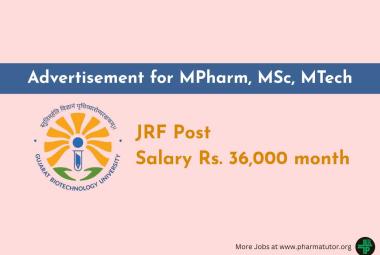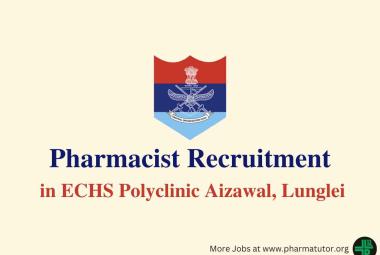About Authors:
Mahek Goel
Shri Baba Mastnath Institute of Pharmaceutical Science & Research
Asthal Bohar, Rohtak, Haryana (124001)
mahekgoel10@gmail.com
Abstract:
Nanoparticles are the preparations having size in nanometers. Particulate systems like nanoparticles have been used as a physical approach to alter and improve the pharmacokinetic and pharmacodynamic properties of various types of drug molecules. They have been used in vivo to protect the drug entity in the systemic circulation, restrict access of the drug to the chosen sites and to deliver the drug at a controlled and sustained rate to the site of action. Various polymers have been used in the formulation of nanoparticles for drug delivery research to increase therapeutic benefit, while minimizing side effects. Here, we review various aspects of nanoparticle formulation, characterization, effect of their characteristics, drug loading, in vitro release profile and their applications in delivery of drug molecules and therapeutic genes.
[adsense:336x280:8701650588]
Reference Id: PHARMATUTOR-ART-1434
Introduction:
Nanoparticles are colloidal particles composed of a biocompatible or biodegradable lipid matrix. These are transport carrier compartments for drugs or other active molecules of non-liposomal character having size ranging from 10-1000 nm (1 μm). These bioactives are entrapped in the polymer matrix as particulates enmesh or solid solution or may be bound to the particle surface by adsorption or chemically. The nanoparticles loaded bioactives could not only deliver drugs to specific organs but delivery rate in addition could be controlled as being bystanders, burst, controlled, pulsatile or modulated.
Depending on the process used for their preparation, two types of nanoparticles can be obtained: nanospheres or nanocapsules. Nanospheres may be defined as solid core spherical particulates, which are nanometric in size. They contain drug embedded within the matrix or adsorbed on to surface; Nanocapsules are vesicular system in which drug is essentially encapsulated within the central volume surrounded by an embryonic continuous polymeric sheath. In nanocapsules, drug is mainly encapsulated in the solution system.
In addition to the properties of the carrier material, that is, the polymer and the auxiliary substances, bioacceptability is also influenced by particle size. Reduction in particle size enables intravenous injection. The diameter of the smallest blood capillaries is 4 μm; consequently, solid particles must have a smaller diameter to be able to traverse the capillaries. A small particle size is also desirable for intramuscular and subcutaneous administration. It also has been demonstrated that a reduction in particle size of polymeric particles minimizes possible irritant reactions at the injection site.
[adsense:468x15:2204050025]
ADVANTAGES OF NANOPARTICLES
- Nanoparticles have dimensions below the critical wavelength of light renders them transparent, a property which makes them very useful for applications in packagings, cosmetics and coatings.
- Particle size and surface characteristics of nanoparticles can be easily manipulated to achieve both active and passive targeting.
- Release of the drug can be controlled or sustained so as to achieve increase in therapeutic efficacy of drug and reduction in side-effects.
- They are capable of being stored for a period of upto 1 year and hence have longer shelf stability.
- They have the ability to incorporate both hydrophilic and hydrophobic drug molecules.
- They have higher carrier capacity and drugs can be incorporated without any chemical reaction and hence preserving the drug activity.
- The system can be administered via different routes including oral, nasal, parenteral etc.
- These have the potential to increase the bioavailability of drugs.
- They have longer clearance time.
- Site-specific targeting can be achieved by attaching targeting ligands to surface of particles or by using magnetic guidance.
DISADVANTAGES OF NANOPARTICLES
- It involves higher manufacturing costs which may in turn lead to increase in the cost of formulation.
- These have low encapsulation efficiency.
- Water-soluble drugs can be rapidly leaked out in the presence of blood components.
- Their small size and large surface area can lead to particle-particle aggregation, making physical handling of nanoparticles difficult in dry and liquid forms.
- They may trigger immune response and allergic reaction.
- It may involves use of harsh toxic solvents in the preparation process.
POLYMERS USED IN NANOPARTICLES
Polymers are the building blocks of nanoparticulate composites, belong to either natural, semi-synthetic or synthetic origins. The use of these polymers are often restricted by their bioacceptability. Generally, 2 types of polymers are used in the preparation of nanoparticles:
- Natural hydrophilic polymers
- Synthetic hydrophobic polymers
Natural Hydrophilic Polymers
Natural hydrophilic polymers are conveniently classified as proteins and polysaccharides.
Proteins: Gelatin, Albumin, Lectins, Legumin, Vicilin
Polysaccharides: Alginate, Dextran, Chitosan, Agarose
The polymers of natural origin however, suffer from some disadvantages including (a) batch-to-batch variation, (b) conditional biodegaradability and (c) antigenicity. Parenteral administration of polymeric nanoparticles gets compromised mainly due to antigenicity.
Synthetic Hydrophobic Polymers
The synthetic polymers used are typically hydrophobic in nature. The polymers used are either pre-polymerized or synthesized before or during the process of nanoparticle preparation.
Pre-Polymerized: Poly (lactic acid), Poly (lactic-co-glycolide), Polystyrene
Polymerized in process: Poly (isobutylcyanoacrylate), Poly (butylcyanoacrylate),
Polyhexylcyanoacrylate, poly methyl (methacrylate)
NOW YOU CAN ALSO PUBLISH YOUR ARTICLE ONLINE.
SUBMIT YOUR ARTICLE/PROJECT AT articles@pharmatutor.org
Subscribe to PharmaTutor Alerts by Email
FIND OUT MORE ARTICLES AT OUR DATABASE
PREPARATION OF NANOPARTICLES
Many methods are used to manufacture nanoparticles. All of them allow extensive modulation of their structure, composition and physicochemical properties. The choice of the manufacturing method essentially depends on the raw materials intended to be used and on the solubility characteristics of the drug to be associated with the particles. Manufacturing of nanoparticles are based on either in-situ polymerization of monomer in various media or by the dispersion of well characterized preformed polymers.
Despite many technological advances, in-situ polymerization based methods have several drawbacks and limitations:
- Nanoparticles produced by polymerization have inadequate biodegradability properties precluding their use for regular therapeutic administration.
- Due to the multicomponent nature of polymerization media, it is generally very difficult to predict the molecular weight of the resulting polymerized material.
- Possible inhibition of drug activity due to interactions with activated monomers or with the numerous hydrogen ions present in the polymerization process.
Use of preformed polymers for the preparation of nanoparticles have following drawbacks:
- Use of high volumes of organic solvents or oils and toxic chemical cross-linking agents coupled with uncertainty over the source restricts their use.
- Purity on natural macromolecules and potential antigenicity of these agents also limits their use.
Considering all these limitations of nanoparticles obtained from polymerization techniques and from natural preformed polymers, the focus is mainly on employing synthetic preformed polymers of the polyester class as carriers because of their biocompatibility, biodegradation and bioresorbable characteristics.
NANOPARTICLE PREPARATION FROM SYNTHETIC PREFORMED POLYMERS
Among the numerous synthetic polymers available for the preparation of nanoparticles, the most commonly used are poly D,L-lactide-co-glycolide (PLGA) and poly D,L-lactide (PLA), which belongs to family of polyesters. These polymers are known to exhibit adequate biodegradability and biocompatibility in addition to their bioresorbability characteristics.
The preparation method that use synthetic preformed polymers are classified into:
- Solvent emulsification evaporation
- Salting out
- Emulsification diffusion
- Spontaneous emulsification, solvent diffusion
- Solvent displacement
Solvent emulsification evaporation
In this technique, the preformed polymer and the drug is dissolved in a water-immiscible organic solvent, which is emulsified in an aqueous solution containing a stabilizer. This crude emulsion is then exposed to a high-energy source such as an ultrasonic sonicators or passed through homogenisers, colloid mills or microfluidisers to reduce the globule size. The subsequent removal of the organic solvent by heat and vacuum results in the formation of a fine aqueous dispersion of nanoparticles.
Mechanism of formation of nanoparticles
The homogenization step is the key factor in obtaining submicronic particles. The emulsification of oil and water by mechanical shear produces, in most cases, a droplet of size 2-5 μm. On the other hand, the diffusional motion of water-immiscible solvents into the aqueous phase is slow and once the limiting concentration for polymer precipitation is reached, phase separation occurs from the interface. Thus, each emulsion droplet forms one polymer particle when the solvent is removed. In general, good emulsion homogenization such as in ultrasonication produces droplets with a diameter <0.5 microns and thus, a similar size is yielded for nanoparticles.
Advantages and Disadvantages
Though ultrasonication is a convenient homogenization procedure, it presents some drawbacks such as induction of chemical reactions or degradation and difficult scaling up in an industrial setup. Therefore, to overcome these problems, the use of high-pressure homogenisers or microfluidisers is preferred. Another problem is the use of chlorinated solvents, such as chloroform and dichloromethane.
Salting out
This method is based on the separation of a water-miscible solvent from aqueous solutions through a salting-out effect. Acetone is generally chosen as the water-miscible solvent because of its solubilising properties and its well-known separation from aqueous solutions by salting out with electrolytes. The preformed polymer and the drug are dissolved in acetone and this solution is emulsified under vigorous magnetic stirring in an aqueous gel containing the salting out agent (electrolytes such as magnesium acetate or magnesium chloride) and a colloidal stabiliser. The resulting emulsion is then diluted with a sufficient volume of water to enhance the diffusion of acetone into the aqueous phase, thus indicating the formation of nanoparticles. The solvent and salting out agent are then eliminated by cross-flow filtration.
Mechanism of formation of nanoparticles
The diffusion of acetone from the droplets is the most important step. This diffusion, which takes place on dilution with excess water, can generate interfacial turbulence leading to polymer aggregation in the form of nanoparticles.
Advantages and Disadvantages
The major advantages of this technique are the possible incorporation of high amounts of polymer and drug, excellent yields and the easy scale up in an industrial setup. On the other hand, this technique is limited to lipophilic drugs, salting out agents that enable phase separation without precipitation and soluble stabilizers that are compatible with saturated aqueous solutions and do not coacervate in the presence of the solvent. Also, the process requires intense purification to ensure complete removal of the electrolytes.
Emulsification diffusion
This technique involves the use of a partially water-soluble solvent, which is previously saturated in water to ensure the initial thermodynamic equilibrium of both liquids. The preformed polymer is dissolved in the water saturated solvent, and this organic phase is emulsified under vigorous agitation in an aqueous solution containing a stabilizer. The subsequent addition of water to the system causes the solvent to diffuse into the external phase, resulting in the formation of nanoparticles. Depending on the boiling point of the solvent, this can be eliminated by cross-flow filtration.
Mechanism of formation of nanoparticles
Each emulsion droplet produces several nanoparticles, and these are formed by interfacial phenomenon during solvent diffusion. Nanoparticles are formed because of a physicochemical instability produced by solvent transport. The diffusion of the solvent from the globules carries molecules into the aqueous phase, forming local regions of supersaturation from which new globules or polymer aggregates (not totally desolvated) are formed. The stabilization of these ‘protonanoparticles’ is then carried out by the stabiliser that is present at the liquid interface, forming nanoparticles after complete diffusion of the solvent.
Advantages and Disadvantages
The biggest advantage of this technique is the absence of homogenization step (sonication), thus making it possible to be scaled up in an industrial setup. It also provides high yields and high batch-to-batch reproducibility. The drawback of this method is the high volume of water that has to be eliminated from the suspension. In addition, nanoparticles obtained using this process cannot be freeze-dried because of the presence of residual benzyl alcohol.
Spontaneous emulsification solvent diffusion
In this method, nanoparticles are obtained by pouring the polymeric organic solution into an aqueous phase with moderate magnetic stirring. One technical characteristic of this method is the use of a binary mixture of a water-miscible organic solvent and a water-immiscible solvent for the polymeric solution, and the particles are formed by emulsification and subsequent solvent evaporation.
Mechanism of formation of nanoparticles
The preformed polymer is dissolved in an organic solvent mixture consisting of dichloromethane and acetone, which are water-immiscible and water-miscible solvents respectively. This polymeric solvent is then slowly poured into an aqueous solution containing a stabiliser and agitated with a magnetic stirrer. When the polymeric solution is added, emulsion droplets are formed in the aqueous phase; acetone quickly diffuses out from each emulsion droplet, drastically reducing the size. Consequent solvent evaporation removes dichloromethane, solidifying the droplets to form polymeric nanoparticles.
Advantages and Disadvantages
This technique can be easily scaled up in an industrial setup as it doesnot require homogenization. However, due to a considerable amount of residual dichloromethane, the particles are likely to aggregate during the solvent evaporation process, when a larger payload of polymer is used. To overcome this, a mixture of acetone and alcohol has sometimes been used instead of dichloromethane.
Solvent Displacement
In this process, the polymer, the drug and optionally a lipophilic stabiliser (phospholipids) are dissolved in a semipolar water-miscible solvent such as acetone or ethanol. This solution is poured or injected into an aqueous solution containing a stabiliser (poloxamer-188) under magnetic stirring. Nanoparticles are formed by rapid solvent diffusion, which is then eliminated from the suspension by heating under reduced pressure.
Mechanism of formation of nanoparticles
The formation of nanoparticles by this technique is explained by the interfacial turbulence generated during the solvent displacement phase. Subsequently a violent spreading is observed because of mutual miscibility between the solvents. Droplets of solvent, probably of nanometric size, are torn from the interface. These droplets are rapidly stabilized by the stabilizing agent, until diffusion of the solvent is complete and polymer aggregation has occurred. Interfacial turbulence is caused by localized lowering of the interfacial tension where the oil phase undergoes rapid and erratic pulsations or ‘kicks’, each of which is quickly damped out by viscous drug. The energy required for these jerky movements comes from the energy released as the solvent is redistributed to its equilibrium state. If the solvent droplets formed contain polymer, these would tend to aggregate and form nanoparticles because of the continuous diffusion of solvent and the presence of non-solvent medium. This process is also known as nanoprecipitation.
Advantages and Disadvantages
This technique is very simple, does not involve the use of homogenizers and hence can be scaled up easily in an industrial setup. A major drawback of this technique is the difficulty in choosing the drug/polymer/solvent/non-solvent system in which nanoparticles would be formed and the drug efficiently entrapped.
NOW YOU CAN ALSO PUBLISH YOUR ARTICLE ONLINE.
SUBMIT YOUR ARTICLE/PROJECT AT articles@pharmatutor.org
Subscribe to PharmaTutor Alerts by Email
FIND OUT MORE ARTICLES AT OUR DATABASE
PHARMACEUTICAL ASPECTS OF NANOPARTICLES
As nanoparticles are intended to be used in humans as a pharmaceutical dosage forms, therefore they should be free from any toxic impurities, should be easy to store, should be easy to administration, and, above all, should be sterile, as most of them are to be intended for parenteral use. Accordingly, three important processes are performed:
· Purification
· Freeze-drying
· Sterilization
Purification of nanoparticles
Depending on the method of preparation used for the preparation of nanoparticles, a large number of toxic impurities can be found in the nanoparticulate system including organic solvents, electrolytes, surfactants, stabilizers and large polymer aggregates. Simple filtration only removes polymer aggregates while other impurities require more sophisticated processes. The most commonly reported processes are gel filtration, dialysis and ultracentrifugation. These methods are not so efficient as these are restricted to lab scale and are incapable of removing molecules with high molecular weights.
Cross-flow filtration method can be efficiently scaled up to an industrial scale and hence used as an efficient purification technique. This technique can be easily scaled up by enlarging the filtering surface. In this technique, the nanoparticle suspension is filtered through the membranes, with the direction of the fluid being tangential to the surface of the membranes. The suspension has to undergoes various filtration cycles while the filtrate containing components smaller than the pores of the membrane as well as soluble impurities can be discarded.
Freeze-drying of nanoparticles
When nanoparticles are stored as an aqueous suspension, then solubilisation of the polymer, drug leakage, drug desorption or drug degradation may occur, therefore to ensure the long term storage of nanoparticles, freeze-drying or lyophilisation can be used. This technique involves the freezing of the suspension and the subsequent removal of its water content by sublimation under reduced pressure. After complete dessication, nanoparticles are obtained in the form of a dry, free-flowing powder that is easy to handle and store. Freeze-dried nanoparticles can be easily redispersed in water without any modification in their properties. However, in some cases, full redispersion of the system may be difficult to achieve because of the composition of the nanoparticulate polymeric matrix. This problem can be prevented by lyophilizing the system in the presence of appropriate lyoprotective agents such as glucose, trehalose or sucrose.
Sterilization of nanoparticles
As nanoaprticles are intended to be used parenterally, so it has to be sterile and apyrogenic. Commonly used sterilization techniques such as filtration through 0.22 μm is not adequate because microorganisms and nanoparticles are similar in size (0.3-1 μm). Therefore, in-process aseptic techniques are generally preferred. However, to ensure complete microbiological safety, a terminal sterilization step is required.
Autoclaving (moist heat sterilization) and γ-irradiation are the techniques commonly employed for terminal sterilization. This techniques affect the physicochemical properties of the system and, hence, sterilization is the critical step.
DRUG LOADING AND IN-VITRO RELEASE PROFILE OF NANOPARTICLES
Lipophilic or poorly soluble drugs are often incorporated in a nanocapsule or nanoparticles using hydrophobic polymers. The selection of organic solvent which is to used in reservoir of system depends on the solubility of the drug. Depending on the drug hydrophobicity, it may require highly non-polar solvents like chloroform and methylene chloride. The release of incorporated drug depends on partitioning behaviour between capsular reservoir and dispersion phase sink.
In hydrophilic drugs, the aqueous phase contains the drug molecules which are embedded in the polymeric cross-linked matrix. Drug-polymer affinity and interaction may be the critical factors that determine and regulate drug payload or percent drug incorporation and drug release. The encapsulation of drug in hydrophilic polymers requires some appropriate organic solvent depending on the procedural and formulation factors.
In-vitro release profile of lipophilic drugs
Inner structure of polymeric colloidal system largely affects the in-vitro release behaviour of lipophilic compounds. Drug release from nanocapsules mainly occurs by the drug partition from the colloidal suspension to the external sink solution and thus in turn depends on the solubility of the drug in the oily core and external receptor medium. On the other hand, the in-vitro release characteristics of the lipophilic compounds from the nanoparticles is dominated by the polymer erosion and in most of the cases a biphasic release pattern results. The first phase (burst release) is due to the release of the drug adsorbed on the particles surface and the second phase is due to drug diffusion out of the polymer matrix.
In-vitro release profile of hydrophilic drugs
A hydrophilic compound can be adsorbed on to preformed nanospheres or entrapped within a polymer matrix composed of natural macromolecules or synthetic polymers. Generally, in the first case, the release of hydrophilic drugs from polymeric nanoparticles occurs relatively fast (1-2 days) and the release rate reflects the affinity of the drug for the polymer. In the second case however, the polymer degradation rate and inner structure of nanoparticle in combination may influence the drug release profile.
CHARACTERIZATION OF NANOPARTICLES
Nanoparticles are characterized by size, density, electrophoretic mobility, angle of contact, specific surface area, recovery and drug incorporation efficiency.
Size and Morphology
Particle size distribution of nanoparticles can mainly be determined by photon correlation spectroscopy (PCS) and electron microscopy (EM). EM includes scanning electron microscopy (SEM), transmission electron microscopy (TEM) and freeze fracture techniques. EM measures size and distribution of individual particles. While, freeze fracturing of particles determines morphology of inner structure of particles.
Atomic force microscopy (AFM) is an advanced technique which is used for characterization of nanospheres. AFM images can be obtained in an aqueous medium and, hence, is an effective means of investigating nanoparticle behaviour in biological environment.
Specific surface
Specific surface area of nanoparticles can be measured by using sorptometer. The equation which can be used to calculate specific surface area is given below:
A = 6 / ρ.d
Where, A is specific surface area, ρ is the density and d is the diameter of the particle. The surfactant coating reduces the specific surface area.
Surface Charge and Electrophoretic Mobility
The interaction of the nanoparticles with the biological environment as well as their electrostatic interaction with bioactive compounds can be determined by the nature and intensity of the surface charge on them. Surface charge can be determined by measuring particle velocity in an electric field. Laser light scattering techniques such as laser Doppler anemometry or velocimetry are used as fast and high resolution techniques for determining nanoparticle velocities. Surface charge can also be determined as electrophoretic mobility.
Surface Hydrophobicity
Interaction of nanoparticles with the biological environment is also influenced by the surface hydrophobicity. Several methods including hydrophobic interaction chromatography, two-phase partition, adsorption of hydrophobic fluorescent or radiolabelled probes, and contact angle measurements have been used to evaluate surface hydrophobicity.
Density
SEM, TEM following freeze fracture can be used to determine the morphological characteristics of nanoparticles. The interiors may be continuous or may have some structural imperfections which can provide an indication about the density distribution across the matrix. Gas pycnometer using helium or gas can be used to determine the density of the nanoparticles.
Molecular Weight Measurements
Gel permeation chromatography using a refractive index detector can be used to determine the molecular weight of the polymer and its distribution.
Nanoparticle Recovery and Drug Incorporation Efficiency
Nanoparticle recovery or its yield can be calculated by following equation:
Nanoparticle recovery (%) = Concentration of drug in nanoparticles
----------------------------------------------
Concentration of nanoparticles recovered
Drug incorporation efficiency has been expressed both as drug content (%w/w) and drug entrapment (%) represented by the following equation:
Drug incorporation efficiency = Amount of drug entrapped in nanoparticles
----------------------------------------------
Total amount of added drug
In-Vitro Release
Standard dialysis, diffusion cell or modified ultrafiltration techniques which use phosphate buffer utilizing double chamber diffusion cells on a shaker stand can be used to determine in-vitro release profile of nanoparticles. A Millipore, hydrophilic, low-protein binding membrane is generally used in between the two chambers. Donor compartment is then filled with the nanoparticle system and the receptor compartment is filled with the plain buffer. The receptor compartment is then assayed at different time intervals for the released drug using standard procedures.
THERAPEUTIC APPLICATIONS OF NANOPARTICLES
Nanoparticles have been widely employed for different therapeutic applications, some of which are listed below:
· For intracellular targeting of anti-effective drugs to combat the ‘difficult to treat’ intracellular infections of the human body.
· For targeting of cytostatic drugs to reduce toxicity and increase therapeutic activity.
· For specific targeting of anti-inflammatory drugs to areas of inflammation, by which the side-effects of these drugs can be minimized.
· For ocular delivery systems, to deliver pilocarpine and other miotic drugs.
· As carriers for radionucleotides for diagnostic purposes in nuclear medicines.
· To improve the solubility and bioavailability of poorly soluble drugs and protects from gastrointestinal enzymes and hence, helps in peroral absorption
· For skin and hair care in the form of solid nanoparticles, wherein the oily core contains a wide variety of different cosmetic oils and lipophilic agents.
· To deliver drugs across the blood brain barrier (BBB).
· To formulate sustained release preparations.
· For the controlled delivery of disinfectants or algicide into large bodies of water such as insect pest feed .
· For targeted delivery of proteins and peptides.
· As adjuvants to render antigens potent enough to be useful for vaccines.
· Have prolonged systemic drug effect due to prolonged systemic circulation and hence, uptake by reticuloendothelial system can be avoided.
NOW YOU CAN ALSO PUBLISH YOUR ARTICLE ONLINE.
SUBMIT YOUR ARTICLE/PROJECT AT articles@pharmatutor.org
Subscribe to PharmaTutor Alerts by Email
FIND OUT MORE ARTICLES AT OUR DATABASE
CONCLUSION
Nanoparticles are the colloidal particles whose size ranges in the nanometric size which are mainly employed through parenteral route, hence, requiring careful development of test methods and acceptance criteria for the specifications. The foregoing shows that nanoparticulate systems have great potentials, being able to convert poorly soluble, poorly absorbed and labile biologically active substance into promising deliverable drugs. The core of this system can enclose a variety of drugs, enzymes, genes and is characterized by a long circulation time due to the hydrophilic shell which prevents recognition by the reticular-endothelial system. To optimize this drug delivery system, greater understanding of the different mechanisms of biological interactions, and particle engineering, is still required. Further advances are needed in order to turn the concept of nanoparticle technology into a realistic practical application as the next generation of drug delivery system. In particular, the in vitro release test method and acceptance criteria require rigorous scientific consideration and should be developed with an eye toward understanding the mechanisms of drug release. The final specifications need to ensure the safety, identity, strength, performance, and quality of the drug product at release and during storage through the end of its shelf-life. Major progresses in the development of nanoparticulate systems have been made in recent years as evidenced by the regulatory approval and market launch of several new products. Both the availability of novel carrier materials and the advances in method of fabrication have contributed to these commercial successes. The objective of nanoparticulate system is to achieve a desired pharmacological response in a sustained manner at a selected site without undesirable interactions at the other sites. This is especially important in cancer chemotherapy, enzyme replacement therapy etc.
REFERENCES
1. Langer R. Biomaterials in drug delivery and tissue engineering: one laboratory's experience. Acc Chem Res 2000; 33: 94-101.
2. Bhadra D, Bhadra S, Jain P, Jain NK. Pegnology: a review of PEG-ylated systems. Pharmazie 2002; 57: 5-29.
3. Kommareddy S, Tiwari SB, Amiji MM. Long-circulating polymeric nanovectors for tumor-selective gene delivery. Technol Cancer Res Treat 2005; 4: 615-25.
4. Lee M, Kim SW. Polyethylene glycol-conjugated copolymers for plasmid DNA delivery. Pharm Res 2005; 22: 1-10.
5. Vila A, Sanchez A, Tobio M, Calvo P, Alonso MJ. Design of biodegradable particles for protein delivery. J Control Release 2002; 78: 15-24.
6. Mu L, Feng SS. A novel controlled release formulation for the anticancer drug paclitaxel (Taxol(R)): PLGA nanoparticles containing vitamin E TPGS. J Control Release 2003; 86: 33-48.
7. Kreuter J. Nanoparticles. In Colloidal drug delivery systems, J, K., Ed. Marcel Dekker: New York, 1994; pp 219-342.
8. Reverchon E, Adami R. Nanomaterials and supercritical fluids. The Journal of Supercritical Fluids 2006; 37: 1-22.
9. Rolland JP, Maynor BW, Euliss LE, Exner AE, Denison GM, DeSimone JM. Direct fabrication and harvesting of monodisperse, shape-specific nanobiomaterials. J. Am. Chem. Soc. 2005; 127: 10096-10100
10. Kompella UB, Bandi N, Ayalasomayajula SP. Poly (lactic acid) nanoparticles for sustained release of budesonide. Drug Deliv. Technol. 2001; 1: 1-7.
11. Ravi MN, Bakowsky U, Lehr CM. Preparation and characterization of cationic PLGA nanospheres as DNA carriers. Biomaterials 2004; 25: 1771-1777.
12. Li YP, Pei YY, Zhou ZH, Zhang XY, Gu ZH, Ding J, Zhou JJ, Gao, XJ, PEGylated polycyanoacrylate nanoparticles as tumor necrosis factor-[alpha] carriers. J Control Release 2001; 71: 287-296.
13. Kwon, HY, Lee JY, Choi SW, Jang Y, Kim JH. Preparation of PLGA nanoparticles containing estrogen by emulsification-diffusion method. Colloids Surf. A: Physicochem. Eng. Aspects 2001; 182: 123-130.
14. Zambaux M, Bonneaux F, Gref R, Maincent P, Dellacherie E, Alonso M, Labrude P, Vigneron C. Influence of experimental parameters on the characteristics of poly(lactic acid) nanoparticles prepared by double emulsion method. J. Control. Release 1998; 50: 31-40.
15. Niwa T, Takeuchi H, Hino T, Kunou N, Kawashima Y. Preparation of biodegradable nanoparticles of water-soluble and insoluble drugs with D,Llactide/glycolide copolymer by a novel spontaneous emulsification solvent diffusion method, and the drug release behavior. J. Control. Release 1993; 25: 89-98.
16. Zhang Q, Shen Z, Nagai T. Prolonged hypoglycemic effect of insulin-loaded polybutylcyanoacrylate nanoparticles after pulmonary administration to normal rats. Int. J. Pharm. 2001; 218: 75-80.
17. Boudad H, Legrand P, Lebas G, Cheron M, Duchene D, Ponchel G. Combined hydroxypropyl-[beta]-cyclodextrin and poly(alkylcyanoacrylate) nanoparticles intended for oral administration of saquinavir. Int J. Pharm. 2001; 218: 113-124.
18. Puglisi G, Fresta M, Giammona G, Ventura CA. Influence of the preparation conditions on poly(ethylcyanoacrylate) nanocapsule formation. Int. J. Pharm. 1995; 125: 283-287.
19. Calvo P, Remunan-Lopez C, Vila-Jato JL, Alonso MJ. Novel hydrophilic chitosan-polyethylene oxide nanoprticles as protein carriers. J. Appl. Polymer Sci. 1997; 63: 125-132.
20. Calvo P, Remunan-Lopez C, Vila-Jato JL, Alonso MJ. Chitosan and chitosan/ethylene oxide-propylene oxide block copolymer nanoparticles as novel carriers for proteins and vaccines. Pharm Res. 1997; 14: 1431-1436.
21. Jung J, Perrut M. Particle design using supercritical fluids: Literature and patent survey. J. Supercritical Fluids 2001; 20: 179-219.
22. Thote AJ, Gupta RB. Formation of nanoparticles of a hydrophilic drug using supercritical carbon dioxide and microencapsulation for sustained release. Nanomedicine: Nanotech. Biology Medicine 2005; 1: 85-90.
23. Sun Y, Mezian M, Pathak P, Qu L. Polymeric nanoparticles from rapid expansion of supercritical fluid solution. . Chemistry 2005; 11: 1366-73.
24. Panyam J, Labhasetwar V. Biodegradable nanoparticles for drug and gene delivery to cells and tissue. Adv Drug Deliv Rev 2003; 55: 329-47.
25. Desai MP, Labhasetwar V, Walter E, Levy RJ, Amidon G L, The mechanism of uptake of biodegradable microparticles in Caco-2 cells is size dependent. Pharm Res 1997; 14: 1568-73.
26. Desai MP, Labhasetwar V, Amidon GL, Levy RJ. Gastrointestinal uptake of biodegradable microparticles: effect of particle size. Pharm Res 1996; 13: 1838-45.
27. Kroll RA, Pagel MA, Muldoon LL, Roman-Goldstein S, Fiamengo SA, Neuwelt EA. Improving drug delivery to intracerebral tumor and surrounding brain in a rodent model: a comparison of osmotic versus bradykinin modification of the blood-brain and/or blood-tumor barriers. Neurosurgery 1998; 43: 879-86; discussion 886-9.
28. Kreuter J, Ramge P, Petrov V, Hamm S, Gelperina SE, Engelhardt B, Alyautdin R, von Briesen H, Begley DJ. Direct evidence that polysorbate-80-coated poly(butylcyanoacrylate) nanoparticles deliver drugs to the CNS via specific mechanisms requiring prior binding of drug to the nanoparticles. Pharm Res 2003; 20: 409-16.
29. Zauner W, Farrow NA, Haines AM. In vitro uptake of polystyrene microspheres: effect of particle size, cell line and cell density. J Control Release 2001; 71: 39-51.
30. Redhead HM, Davis SS, Illum L. Drug delivery in poly(lactide-co-glycolide) nanoparticles surface modified with poloxamer 407 and poloxamine 908: Mohanraj & Chen 572 Trop J Pharm Res, June 2006; 5 (1) in vitro characterisation and in vivo evaluation. J Control Release 2001; 70: 353-363.
31. Dunne M, Corrigan OI, Ramtoola Z. Influence of particle size and dissolution conditions on the degradation properties of polylactide-co-glycolide particles. Biomaterials 2000; 21: 1659-1668.
32. Panyam J, Dali MM, Sahoo S K, Ma W, Chakravarthi SS, Amidon GL, Levy RJ, Labhasetwar V. Polymer degradation and in vitro release of a model protein from poly(,-lactide-co-glycolide) nano- and microparticles. J Control Release 2003; 92: 173-187.
33. Swarbrick J, Boylan J. Encyclopedia of pharmaceutical technology. 2nd ed.; Marcel Dekker: New York, 2002.
34. Muller RH, Wallis KH. Surface modification of i.v. injectable biodegradable nanoparticles with poloxamer polymers and poloxamine 908. Int. J. Pharm. 1993; 89: 25-31.
35. Brigger I, Dubernet C, Couvreur P. Nanoparticles in cancer therapy and diagnosis. Adv. Drug Deliv. Rev. 2002; 54: 631-651.
NOW YOU CAN ALSO PUBLISH YOUR ARTICLE ONLINE.
SUBMIT YOUR ARTICLE/PROJECT AT articles@pharmatutor.org
Subscribe to PharmaTutor Alerts by Email
FIND OUT MORE ARTICLES AT OUR DATABASE









